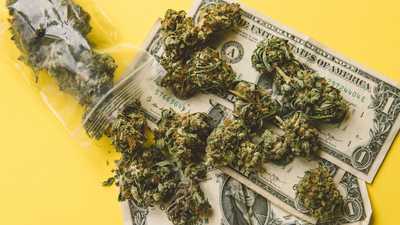| Home | About | Archives | RSS Feed |

The Independent Investor: The Cost of Rebuilding God's House
 |
Sometimes a tragedy can bring people together. In the case of the devastating fire that swept Paris' Notre Dame Cathedral, the world wept. But even before the fire was completely extinguished, the business community was already making plans to rebuild the 850-year-old edifice.
The price tag will likely be in the multibillion-dollar range. A preliminary assessment of the damage thus far includes two-thirds (about 100 meters) of the roof and the destruction of a spire, which the world witnessed on television. At least a 62-foot expanse of stained-glass windows was also severely damaged.
What we don't know as of yet, is how the 800-pipe organ, one of the largest in the world, fared through the fire. Much of the art work has been saved thanks to the 400 firefighters, who, in addition to battling the blaze, carried artwork and priceless relics, such as Christ's crown of thorns, to safety. In a stroke of luck, an additional 16 ancient religious statues had already been removed last week for cleaning.
Many architects worry that the fire could have weakened the stonework of the cathedral. Hand-carved over 200 years of construction, the ancient stone can turn to dust in extreme heat through a process called calcination. Pouring cold water on that hot stone can also cause it to weaken and crack. The two rectangular bell towers were saved, despite the fire's spread into one of them, and credit for that accomplishment should go to the French firefighters, who battled the blaze for 15 hours.
Before the last smoke cleared, business leaders were already pledging their support to re-build. Within 24 hours of the disaster, two of France's richest men pledged 300 million euros to re-build the historic landmark. By Wednesday morning, that total has climbed to 450 million euros with the largest donation made by the LVMH Group. LVMH owns Louis Vuitton, Givenchy and Christian Dior and has pledged 200 million euros ($226 million). The Pinault Family, which controls Kering, a French luxury brand that owns Gucci and Yves Saint Laurent, chipped in an additional $113 million ($100 million euros)
But the economic blow will go far beyond the damage to the cathedral itself. Over 50,000 visitors per day (an estimated 13 million a year) make the pilgrimage through the dark, candle-lit interior of the church and into its crypt. Although the cathedral is free to enter, it costs 8.50 euros to experience the tower and an additional 6 euros to explore the crypt. I did both on my last excursion to Notre Dame and it was well worth it.
If I assume only half of those tourists are like me and are willing to pay the additional charges, it still comes to as much as $225 million per year in revenues. But maintaining those hallowed halls is not cheap. Basic renovations cost in excess of $4.5 million per year. There are also estimates that just conducting essential structural work in the future would require almost $200 million, and that was before the blaze.
The cathedral has survived more than its fair share of misfortune through the years. It was a target of protest during the French Revolution, for example, when it sustained considerable damage. Twenty-eight statues of biblical kings in the cathedral were pulled down with ropes and decapitated by mobs. Its bells were once melted down for artillery cannon. At one time, it was used as a warehouse.
Napoleon Bonaparte was crowned emperor in 1804 and saved the church from demolition after centuries of decay and neglect. Restored by Napoleon and once again used as a place of worship, the church thrived. In 1909, Joan of Arc was beatified there.
Through the years, this premier example of Gothic architecture has been rebuilt and/or reconstructed many times. It appears that much of the present damage occurred in that part of the building that had been restored in the 19th century. The truly old parts of the church constructed in the 10th, 11th and 12th centuries escaped damage. It could have been another lucky break or maybe the silver lining in this dark cloud of misfortune.
Bill Schmick is registered as an investment adviser representative and portfolio manager with Berkshire Money Management (BMM), managing over $400 million for investors in the Berkshires. Bill's forecasts and opinions are purely his own. None of the information presented here should be construed as an endorsement of BMM or a solicitation to become a client of BMM. Direct inquiries to Bill at 1-888-232-6072 (toll free) or email him at Bill@afewdollarsmore.com.
The Independent Investor: Retirement Savers Could See Positive News This Year (Maybe)
 |
In this acrimonious political environment, little in the way of new legislation is expected to pass both chambers of Congress. One exception may be the Secure Act. Last Tuesday, a key House committee unanimously approved the bill, which would greatly enhance some private retirement plans.
The bill would not only increase the flexibility of 401 (k) plans but would also provide much greater access for small-business owners and their employees. The changes would hopefully encourage many more small businesses to offer private retirement benefits to their workers. It is the most sweeping legislation to come out of Congress in over a decade.
The sponsors, including the top Democrat and Republican on the tax-writing Ways and Means Committee, intend to allow smaller companies to join together to provide these plans and provide a $500 tax credit for companies that establish plans and provide their workers with automatic enrollment. It would also offer the opportunity for long-term, part-time workers to participate in retirement savings plans.
A case in point is Brothers Landscaping and Construction of Hillsdale, N.Y. The McNamee's established their business back in 2007. Twelve years later, the company's revenues are just shy of $1 million a year.
I have known these guys ever since they started cutting my lawn in 2007. Hard-working, conscientious, and honest to the bone, it is men like these who are the backbone of this country. James, 29, called me a few weeks ago to explore opening a 401 (k) plan for he and his 28-year-old brother, Tucker, as well as four additional employees.
"We felt we had to do it in order to compete with much larger companies in our region," James explained. "Our work force ranges from 21 to 29 years old and we need to keep our key qualified help around through providing added incentives."
Although Brothers Landscaping has several additional valuable, part-time employees, under the exiting rules, they do not qualify to be included in the plan. The McNamees are hoping that the Secure Act finally becomes law. They are planning to embrace its key provisions wherever they can.
The legislation also benefits older workers like me. It would repeal the maximum age for IRA contributions. Today under the old laws, at 70, I can no longer contribute to my traditional IRA. I am also required to take a mandatory minimum required distribution (MRD) from my tax-deferred IRA at 70 1/2. The Secure Act would repel the maximum age provision and push back my MRD until I reach 72 years of age.
It also allows 529 educational plans to cover home schools and student loans in addition to college-related expenses. That could be a big boon to parents and students alike who are drowning under educational loan debt.
The Senate Finance Committee introduced a companion bill last week as well. The legislation is an acknowledgement by Congress that more and more Americans are facing a "retirement crisis," according to Chairman Richard Neal, D-MA. Over one-third of all Americans have less than $5,000 saved towards retirement (21 percent have saved nothing at all), according to Northwest Mutual's 2018 Planning and Progress Study.
Obviously, Social Security benefits, which were never intended as a retirement vehicle, are not going to cut it for those who haven't saved enough. As such, more and more older Americans are going to need to continue working and saving if they expect to survive financially. To make matters worse, Americans are living longer, which is a mixed blessing, since we will need more money for longer to make ends meet in our advanced years.
Bill Schmick is registered as an investment adviser representative and portfolio manager with Berkshire Money Management (BMM), managing over $400 million for investors in the Berkshires. Bill's forecasts and opinions are purely his own. None of the information presented here should be construed as an endorsement of BMM or a solicitation to become a client of BMM. Direct inquiries to Bill at 1-888-232-6072 (toll free) or email him at Bill@afewdollarsmore.com.
The Independent Investor: Coffee Prices at 13-Year Lows
 |
A few days ago, arabica coffee futures prices fell to a price they haven't seen since December 2005. But don't expect your morning cup of coffee to reflect those cheaper prices. The coffee business doesn't work like that.
Normally, when the price of a commodity falls (like oil), consumers can expect to see a drop in price at the gas pumps within a week or three. The same thing might happen if the price of beef, wheat, corn or any number of commodities experienced a decline in price, so why not coffee?
You might guess (as I did) that the demand for coffee by consumers must be falling, but that's not the case. In fact, more Americans are drinking at least one cup of coffee per day, if not more, than at any time since 2012. Over 64% of Americans drink a cup of the brew daily.
In order to understand this disconnect between the prices we pay at our local Starbucks or Dunkin Donuts, and the money that growers receive in places like Colombia, Brazil and Vietnam, we need to understand the present state of coffee production. Too many farmers are growing too much coffee. We call that "oversupply."
One of the culprits is government, which, in the case of Colombia, offered additional incentives for farmers to grow more coffee. In Brazil, where growing any sort of food is a big business, they decided to step up their coffee production. At the same time, the cost of growing coffee is also climbing, as costs of labor, energy, equipment, etc. keep rising.
Last year, Colombian coffee farmers were getting $1.08 per pound for their coffee, while the costs were closer to $1.40/pound. It has hurt Colombian farmers so badly that the Colombian Coffee Growers Federation is warning that it may stop trading coffee on the New York Stock Exchange altogether.
So, what makes consumers continue to pay more and more for their coffee? At the risk of dating myself, the year I was born, a cup of coffee cost my Dad 27 cents. Since then, it has climbed and climbed. Recently a survey by 24/7 Wall St, a business blog, tracked the price of a cappuccino today worldwide. In America, the price of a regular cappuccino cost $4.02.
The fact that a cappuccino was used instead of a simple cup of joe is instructive. A cappuccino is equal amounts of espresso, steamed milk and foamed milk. It is one of the most popular drinks in the world, but it isn't all coffee. Thanks to Starbucks and others who followed their lead, today's coffee drinkers rarely drink simple black coffee.
The next time you are in your local coffee shop glance at the menu. You may have a hard time spotting that plain coffee among the eggnog, pumpkin, salted caramel, chocolate, hazelnut, cinnamon, gingerbread and a dozen other ingredients that go into today's popular drinks. Consumers, for the most part, are now drinking coffee-based beverages. Increasingly, the amount of coffee in each cup is less and less. All those other ingredients keep climbing in price and make up more and more of the cost of that coffee cup to the seller.
That's not all, however. Rent, labor, local mandates and regulations, competition, distribution, marketing and last, but not least, commodities associated with your beverage of choice overwhelms that simple cup of black java.
It's my bet that you won't see a decline at the coffee counter any time soon, if at all. There may be some hope for the coffee growers, though. Some commodity experts are predicting coffee prices may rise by 20% or so in 2019, although so far that has not been the case.
They point to the fact that heavy-weight Brazil will have an off-year in production due to their practice of biennial production cycles. If so, the growers may keep their heads above water. Of course, any increase in costs will most assuredly be passed on to us at the coffee counter.
Bill Schmick is registered as an investment adviser representative and portfolio manager with Berkshire Money Management (BMM), managing over $400 million for investors in the Berkshires. Bill's forecasts and opinions are purely his own. None of the information presented here should be construed as an endorsement of BMM or a solicitation to become a client of BMM. Direct inquiries to Bill at 1-888-232-6072 (toll free) or email him at Bill@afewdollarsmore.com.
The Independent Investor: The Business of Baseball
 |
Attendance is down, as is viewership, as we head into the 2019 season. Major League Baseball is hoping some rule changes will turn around the decline. Will it be enough, and does it matter anyway?
Defenders of the game argue that last season's declines were to be expected. Television ratings for all sporting events have been declining for years. But TV ratings in the new world of digital streaming are not what they used to be. There just isn't a good way to capture this new viewership data.
However, there is no way of denying that no World Series (the most popular of baseball's games) has been able to beat the average of 20 million viewers per game that was achieved back in 2010. Last year, viewership of 2018's opening game was at an all-time low of just 3.6 million viewers.
Critics argue that Major League Baseball (MLB) needs to fix the sport in order to boost viewers. A list of criticisms includes "Young people aren't watching. The games drag on and it's boring." After ignoring these criticisms for years, the MLB is finally addressed what they see as the most troublesome issues: the length of games, pace of play and too many strikeouts.
The rule changes have included both on-field changes, as well as proposals from the player's union to improve the competitive balance of the franchises. Some of the suggestions include making the designated hitter universal across both leagues, a rule that would require pitchers to face a minimum of three batters, a 20-second pitch clock, and a reduction in mound visits.
There were several more suggestions, but it is clear that many of the new rules could speed up the game. Another complaint by fans has been that the same five or six teams seem to almost always win the titles (think Yankees and Red Sox). Some of the player's union suggestions would address that by improving draft positions to high-performing, lower-revenue teams, while penalizing teams that repeatedly lose large numbers of games.
But before you fall victim to those that proclaim the death of baseball, know this, Major League Baseball is still a thriving and quite lucrative business. MLB revenues passed the $9 billion mark in 2017, and last year hit $9.3 billion, which is an average of over $300 million per team. Almost 55 percent of that amount went to Major and Minor League player salaries. And MLB revenues are increasing at a much higher rate each season than players salary.
That doesn't mean that the players will be entering the poor house anytime soon. Last year, the average MLB player's salary was $4,095,689. The 2019 minimum salary paid to players called up from the minor leagues is $555,000. The top players can easily command $30-35 million per year with some, like Bryce Harper, signing a ten-year, $360 million contract.
While much attention has been paid to the declining physical attendance at the nation's ballparks, the facts are that stadium attendance is one of the least significant revenue sources for all 30 Major League ballclubs. Sure, when all the proceeds are touted up, several hundred million of that $9 billion comes from attendance, but stadiums cost almost as much to run.
No, the real money for baseball franchises is in media contracts, revenue sharing, and developmental technology like baseball's BAMTech, the MLB's direct-to-consumer streaming, data analytics and commerce management service with 8 million subscribers. It doesn't matter if their teams win or lose, which big shot players they sign, or how many fans are sitting in those bleachers; the money keeps rolling in day after day from this myriad of lucrative sources.
While demographic factors, like age or the decline in interest in playing team sports may crimp the profits of baseball on the margin, in my opinion, it will require a sea-change in viewership before baseball strikes out with investors.
Bill Schmick is registered as an investment adviser representative and portfolio manager with Berkshire Money Management (BMM), managing over $400 million for investors in the Berkshires. Bill's forecasts and opinions are purely his own. None of the information presented here should be construed as an endorsement of BMM or a solicitation to become a client of BMM. Direct inquiries to Bill at 1-888-232-6072 (toll free) or email him at Bill@afewdollarsmore.com.
The Independent Investor: Will Pot Stocks Go Up in Smoke?
 |
Today, medical marijuana is legal in 33 states, while recreational marijuana is legal in 10 states, plus the District of Columbia. Although there has been progress, little of the recent enthusiasm and hype over pot stocks will come to naught unless the federal government does a major about face and legalizes the substance. What are the chances of that?
Billions of dollars' worth of investment, stock market gains, and federal, state, and local taxes are at stake. Predicting the outcome of such a change in federal legislation is, for now, like betting all your chips on red or black in a roulette game. Nonetheless, a growing number of retail investors want to "get in" on pot stocks.
The calls and emails I get today are reminiscent of two years ago. Back then it was all about Bitcoin or some other cryptocurrency. As Bitcoin climbed (from a few hundred dollars to $20,000), the interest and demand to "get in" was almost hysterical. As you might imagine, most of those calls were made as Bitcoin hit new highs.
Fast-forward to today and, while no one has called about a cryptocurrency in over a year with Bitcoin now around $4,000, pot stocks are all the rage. And like Bitcoin, few callers know anything about the marijuana industry.
"What do I need to know?" said one client (an ancient hippie like me). "You put it your mouth, inhale, and bingo. You are high."
But smoking it is a lot different than investing in it.
There is now a bewildering array of investment vehicles (and more coming every day) that confronts the up-and-coming pot investor. There are over 80 exchange-listed pot stocks. Most are Canadian companies (where all pot is legal), which have a listing here in the U.S. Since the federal government still deems marijuana illegal, most big major stock exchanges won't touch them. In addition, there are well over 200 over-the-counter (OTC) securities that trade outside of the big exchanges. The question you should ask is which of those stocks will be a winner and how do I avoid the losers?
The short answer is you need to do your homework. Most investors I talk to are woefully uninformed when it comes to understanding this sector. They fail to realize that most (if not all) companies who engage in this business make no money at all. Part of the reason for this is their inability to borrow or obtain any kind of credit from the U.S. banking system. Until the federal government legalizes marijuana, it is a purely cash business.
To compound the problem, few investors do little more than read market research reports that project global spending on legal cannabis will grow by 230 percent and reach $32 billion by next year. Of that amount, $23 billion is expected to come from U.S. sales. But that forecast assumes that more states will legalize the drug this year and next. That's a big "if."
Clearly, there is a bull case for the pot industry. Readers may be aware that over 200 million Americans reside in those states that have already legalized marijuana for medical or recreational use. And over 2/3rds of Americans support its legalization, according to Gallup polls.
What investors ignore is that the medical market for cannabis and the recreational market are vastly different animals. To muddy the waters further, there is the hemp industry. Hemp is another form of the versatile cannabis plant that has been used in textile production, foods and other home products for decades. There is also a growing use of cannabidiol or CBD. CBD is a non-psychoactive cannabis compound that is being infused in products as diverse as skin care, coffee and even dog biscuits. Titus, our 9-year-old chocolate Lab, who suffers from arthritis, for example, is now munching on CBD cookies several times a week. Over 40 states have already passed some kind of CBD legislation.
Each sub-sector of this marijuana industry has a different profile, profitability, and future. But in the rush to make money, these realities are all but by neophyte speculators. Does that mean that pot stocks will go the way of Bitcoin in a year or two?
Some will, and some won't. Like all fledgling industries with promise, there will be some companies that make it and a whole lot that won't. Next week we will discuss what kind of companies and what trends to look for in the months and years ahead.
Bill Schmick is registered as an investment adviser representative and portfolio manager with Berkshire Money Management (BMM), managing over $400 million for investors in the Berkshires. Bill's forecasts and opinions are purely his own. None of the information presented here should be construed as an endorsement of BMM or a solicitation to become a client of BMM. Direct inquiries to Bill at 1-888-232-6072 (toll free) or email him at Bill@afewdollarsmore.com.

